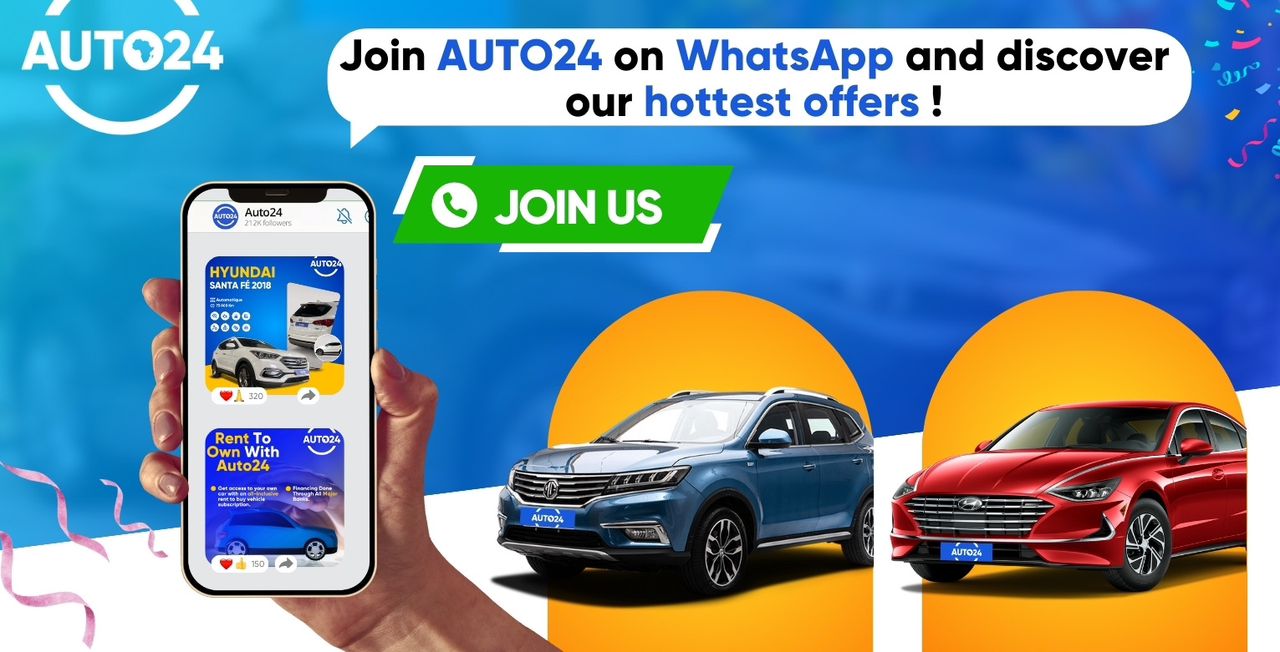Your car’s radiator is crucial for preventing engine overheating and costly damage. Ignoring warning signs like coolant leaks, overheating, or strange smells can lead to severe engine issues. Here’s a quick summary of what to watch for and how to act:
- Coolant Leaks: Look for puddles under the car, sweet smells, or white smoke.
- Overheating: Spiking temperature gauges or frequent overheating are red flags.
- Dirty Coolant: Brown, sludgy, or discolored coolant signals corrosion or contamination.
- Damaged Parts: Cracked hoses, blocked fins, or physical damage can disrupt cooling.
What to Do:
- Regularly check coolant levels, radiator condition, and temperature gauges.
- Clean and flush the radiator as needed.
- Replace damaged hoses and avoid quick fixes like stop-leak products.
- Seek professional help for recurring issues or major damage.
Timely maintenance and early detection save money and keep your engine running smoothly.
5 Warning Signs Your Radiator Needs Replacement!
Warning Signs Your Radiator Needs Attention
Your car’s radiator often sends out clear signals when something’s wrong. Ignoring these signs can lead to severe engine damage. Below are some of the most common warning signs that indicate your radiator might need immediate care.
Coolant Leaks
If you notice puddles under your car, especially near the front, it could mean your radiator is leaking. Coolant comes in a variety of colors – green, orange, pink, yellow, or blue – and is often easy to spot [9, 10].
A sweet smell lingering after you turn off the engine is another clue. This odor, which becomes more noticeable in enclosed spaces, suggests coolant may be evaporating from a leak [9, 10].
If you’re constantly topping off your coolant, there’s likely a hidden leak somewhere in the system.
White smoke from the exhaust is a more serious warning. It could mean coolant is leaking into the combustion chamber, which requires immediate attention to prevent further damage [11, 12].
Also, check the radiator connections and hoses for signs of trouble, such as stains, corrosion, or even hissing sounds. These can indicate pressurized leaks that need fixing [9, 12].
Engine Overheating
Your temperature gauge spiking or dashboard warning lights are clear signals that your engine is overheating. This happens when the radiator isn’t doing its job of releasing heat efficiently.
If your car overheats even on short trips or during stop-and-go traffic, it could point to issues like blocked passages, damaged radiator fins, or leaks disrupting the coolant flow.
Repeated overheating episodes are a red flag for more serious problems. Blockages can restrict coolant circulation, while damaged fins reduce the radiator’s ability to cool the engine. In extreme cases, leaks can drain the system completely, leading to severe engine damage like warped cylinder heads or even a cracked engine block.
Strange Smells and Dirty Coolant
Unusual smells and discolored coolant are additional indicators of radiator trouble.
If your coolant looks brown or contains particles, it’s a sign of internal corrosion. Coolant should typically appear green, orange, or pink, so a flush might be necessary.
A burning smell could mean coolant is coming into contact with hot engine parts, another symptom of overheating. If you notice a sweet odor inside the cabin, it might suggest coolant is leaking onto hot surfaces or even entering the car’s ventilation system. Check under the hood for moisture, condensation, or small puddles if this happens.
Often, these symptoms don’t appear in isolation. For example, a sweet smell may accompany visible leaks, or discolored coolant might show up alongside overheating. Addressing these issues promptly can save you from costly engine repairs down the line. Spotting these signs early is the first step toward effective fixes, which we’ll cover in the next sections.
What Causes Radiator Problems
Understanding radiator issues can help you identify the main culprits – like rust, physical damage, or blockages – that gradually reduce your cooling system’s effectiveness. Left unaddressed, these problems can lead to costly engine damage. Common signs include leaks, overheating, and discolored coolant, as previously mentioned.
Rust and Old Coolant
Rust is a major enemy of your radiator. It forms when air, metal, and liquid combine inside the cooling system over time. As coolant ages, it loses its protective inhibitors, allowing acids to form and corrode radiator components.
Using tap water instead of distilled water can make things worse. Tap water contains minerals that accelerate corrosion, especially when mixed with old coolant. While iron and steel rust through oxidation, aluminum corrodes differently; it forms aluminum oxide, which acts as a protective layer. However, once rust sets in, it leads to mineral deposits and debris that clog the system, restrict coolant flow, and ultimately cause overheating. To prevent this, regular coolant flushes every 20,000 to 30,000 miles are essential. Always use the coolant recommended by your vehicle’s manufacturer, mixed with distilled or demineralized water.
Beyond corrosion, physical damage to radiator components can also compromise your cooling system.
Damage to Parts and Hoses
Physical damage is another common cause of radiator problems. Cracked radiator hoses are particularly troublesome, as they allow coolant to leak slowly, depriving your engine of the fluid it needs to stay cool.
A cracked hose can lead to gradual coolant loss, increasing the risk of overheating, head gasket failure, and engine warping. Hoses are exposed to high temperatures and pressure, which wear them down over time. Most manufacturers recommend replacing radiator hoses every 4 years or 60,000 miles, whichever comes first. Similarly, cracks in the radiator tank or tubes can cause coolant to drain out, leaving your engine vulnerable to overheating. Avoid using quick fixes like stop-leak products. These additives temporarily seal leaks by clumping particles together, but they often settle elsewhere in the system, clogging heater cores, radiator tubes, thermostats, and water pumps.
Blocked Radiator Fins
Radiator fins play a crucial role in cooling by providing a large surface area for airflow. Over time, dirt, dust, and debris – especially if you frequently drive on unpaved roads – can build up on the fins, significantly reducing their efficiency. Additionally, physical impacts or improper cleaning can bend the fins, further obstructing airflow. Reduced airflow forces the cooling system to work harder, increasing engine temperatures.
To maintain proper airflow, inspect and clean the fins regularly. A garden hose with a spray nozzle works well to rinse off debris, but use gentle pressure to avoid bending the delicate fins. Regular maintenance can go a long way in keeping your radiator functioning effectively.
sbb-itb-09752ea
How to Fix and Prevent Radiator Problems
Once you’ve identified radiator issues, proper maintenance and timely repairs are essential to keeping your engine in good shape. Routine checks and care can help you avoid expensive engine damage down the road.
Checking Coolant and Radiator Condition
Make it a habit to inspect your coolant levels every six months or during each oil change to detect potential problems early. Most manufacturers suggest changing the engine coolant every 30,000 to 60,000 miles.
Start by ensuring the engine is completely cool and the car is parked on level ground. Locate the translucent coolant reservoir and check that the fluid level is between the "ADD" and "FULL" marks.
Pay close attention to the coolant’s appearance. If it looks rust-colored, has floating particles, or feels oily and sludgy, it’s contaminated and needs immediate replacement. Discoloration is another warning sign – use a tester to evaluate its condition if the color changes.
While checking the coolant, inspect the radiator hoses for cracks, bulges, or soft spots. Look around the radiator, hoses, and water pump for any signs of leaking coolant. Even small puddles under your parked car can signal a developing issue.
Keep an eye on your temperature gauge while driving. If it consistently runs hotter than usual or fluctuates unexpectedly, a cooling system pressure test can help pinpoint hidden leaks. These routine checks make it easier to address issues before they escalate.
Cleaning Out Your Radiator
A clean radiator is crucial for efficient cooling. This process involves cleaning both the external fins and flushing the internal system. External cleaning removes dirt, bugs, and debris from the fins, while flushing clears out sediment and corrosion from the cooling system.
External Cleaning
Always wait until the engine is completely cool before starting. Use a garden hose with gentle pressure to rinse the radiator from the back side, working from the engine bay toward the front grille. Avoid using pressure washers, as they can damage the delicate fins.
Apply a mild detergent like Simple Green or Dawn to loosen stubborn debris, then rinse thoroughly with the hose. For stuck-on bugs or leaves, use a soft-bristled brush to remove them gently. If you notice bent fins, carefully straighten them with a flathead screwdriver, working slowly to avoid causing further damage.
"The key is not to bend the fins on the radiator. If you do bend them over, the dirt might as well have stayed there. Now there will be no airflow through that spot." – Brian Jensen, Owner, BRIAN’S AUTOMOTIVE SERVICE CENTER
Internal Flushing
Flushing the radiator requires more preparation, so safety is key – wear goggles and gloves when handling chemicals. Begin by draining and properly disposing of the old coolant.
Close the drain valve, then add a radiator flush cleaner according to the product instructions, followed by distilled water. Start the engine, turn the heater to high, and let it run for 10–15 minutes to circulate the cleaning solution. Once the engine cools completely, drain the cleaner and debris, then refill with fresh coolant as specified in your vehicle’s manual.
Run the engine briefly to circulate the new fluid and check for leaks. Avoid using vinegar or bleach for cleaning, as these can corrode metal components and worsen the situation.
DIY Repairs vs. Professional Service
Whether to handle radiator issues yourself or call a professional depends on your experience, the complexity of the problem, and safety concerns. Simple tasks like tightening hose clamps or topping off coolant levels are usually manageable for DIY enthusiasts.
| DIY Repairs | Professional Service |
|---|---|
| Cost: $20–$50 for repair kits | Cost: $100–$500 depending on damage |
| Best for: Minor leaks, coolant changes, external cleaning | Best for: Complicated issues, recurring problems, major repairs |
| Pros: Lower cost, hands-on learning | Pros: Accurate diagnosis, specialized tools, warranty |
| Cons: Risk of mistakes, potential for further damage | Cons: Higher upfront cost |
Be honest about your skill level before attempting repairs. Cooling systems can be dangerous to work on, especially when dealing with hot coolant under pressure. If a DIY fix doesn’t solve the problem or if you’re unsure of the root cause, it’s time to seek professional help. Persistent leaks, frequent overheating, or complex electrical issues require expert diagnosis and repair.
When to Call a Mechanic
While basic car maintenance can often be handled at home, there are certain warning signs that require the expertise of a professional. Ignoring these red flags can lead to serious engine damage and expensive repairs. Here’s when routine maintenance isn’t enough, and it’s time to call in a mechanic.
Repeated Leaks or Overheating
If your car keeps leaking coolant or overheating – even after you’ve tried repairs – it’s a sign of deeper issues that need professional attention. For instance, a radiator that continues to overheat after a coolant flush or minor fixes could be failing, putting your engine at risk. You might also hear gurgling or bubbling sounds, which indicate trapped air in the system. This requires professional bleeding to restore proper cooling.
In some cases, the cost of repeated repairs can add up quickly, ranging from $300 to $800. At that point, replacing the radiator may be the smarter, long-term solution.
Engine or Transmission Problems
Radiator problems don’t just stop at leaks and overheating – they can also impact your engine and transmission. Your radiator is responsible for cooling your engine and regulating transmission temperature through an internal heat exchanger. If this exchanger fails, it can cause coolant and transmission fluid to mix. Signs of this include pink or red coolant or transmission fluid that looks milky or contaminated. This type of internal radiator leak can lead to severe damage to both systems.
Another warning sign is persistent transmission overheating, even after fluid changes. This often points to a radiator issue. Additionally, if your engine starts losing power, idles roughly, or vibrates unusually, it could mean overheating has begun to damage internal components. These problems should be addressed by a professional as soon as possible.
As Goods Automotive explains:
"If you’re experiencing radiator or transmission issues, don’t wait for further damage – seek professional assistance immediately."
Professional mechanics have the tools and expertise to diagnose these problems accurately. They can pressure-test the cooling system, identify internal leaks, and assess any heat damage to your engine or transmission. Based on their findings, they’ll determine whether repairs will be effective or if replacement parts are necessary to avoid further breakdowns. Acting promptly when these warning signs appear not only prevents bigger issues but also complements the routine maintenance you’ve already been doing. Catching radiator problems early can save you from even more expensive transmission repairs down the line.
Conclusion: Keep Your Engine Safe with Radiator Care
Your radiator plays a key role in shielding your engine from severe damage. By following regular maintenance practices, you can avoid engine overheating, which can otherwise put immense strain on your car’s components.
Ignoring radiator upkeep can lead to expensive issues like warped cylinder heads or blown head gaskets. In the worst cases, these problems could even result in the need for a complete engine replacement. Clearly, staying proactive with radiator care is far more cost-effective than dealing with major repairs later on.
"Regular radiator maintenance ensures the health of your car’s engine and prevents costly repairs. By keeping your engine at a safe and regulated temperature, your radiator improves your car’s performance, prevents engine damage, and ensures your driving safety." – York Tire & Auto Service
Thankfully, taking care of your radiator isn’t complicated. Stick to your car manufacturer’s recommended maintenance schedule for cooling system checks, keep an eye on coolant levels, look out for leaks, and make sure the front grille stays clean to allow proper airflow. Regularly flushing and replacing your coolant also helps prevent rust and corrosion in the system. These simple steps go a long way toward ensuring your engine’s smooth and reliable performance.
Radiators usually last between 8 and 10 years, but issues like repeated leaks or overheating may signal the need for a replacement sooner. Catching problems early is essential for protecting your engine in the long run, and when persistent issues arise, it’s wise to seek professional assistance.
In short, your radiator is the first line of defense against costly engine repairs. By keeping it in good condition, you not only protect your engine but also ensure dependable and safe driving.
FAQs
How can I tell if my radiator needs basic maintenance or professional repair?
Minor radiator troubles, like a slight loss of coolant, minor leaks, or occasional fluctuations in engine temperature, can often be handled with basic maintenance. This might include topping off the coolant or inspecting hoses for looseness. However, more severe issues – persistent overheating, significant coolant leaks, thick or oddly colored coolant, or a noticeable decline in engine performance – usually call for immediate attention from a professional mechanic. Ignoring these warning signs could lead to serious engine damage.
When in doubt, it’s always wise to play it safe and consult a professional to keep your vehicle running smoothly.
What happens to my engine if I don’t maintain the radiator?
Neglecting your radiator’s upkeep can spell trouble for your engine. Over time, problems like overheating, coolant leaks, or blockages in the radiator can wreak havoc on crucial engine parts. This could lead to warped or cracked components, blown head gaskets, or even a total engine failure.
Ignoring these warning signs not only risks severe damage but also hefty repair bills – or worse, a complete engine replacement. Routine radiator inspections and timely maintenance are key to keeping your engine in good shape and steering clear of expensive breakdowns.
What can I do to maintain my car’s radiator and avoid expensive repairs?
To keep your car’s radiator in good condition and avoid expensive repairs, start by regularly checking the coolant level and topping it off as needed. It’s also a good idea to flush the radiator every 30,000 miles or as specified in your owner’s manual. While you’re at it, inspect the radiator for any signs of leaks, cracks, or other damage. Don’t forget to clean its exterior to maintain proper airflow.
Always use the right type of coolant for your vehicle – this helps prevent corrosion and keeps your engine from overheating. These straightforward maintenance tasks can significantly extend the radiator’s lifespan, which is usually around 8 to 10 years. Staying ahead with these checks ensures your engine stays cool and runs without a hitch.
Related posts
- 7 Winter Car Care Tips for South Africa
- Engine Light On? What It Could Mean in SA Conditions
- Car Battery Maintenance Tips for Cold Mornings & Hot Days
- How to Extend the Life of Your Used Car in SA





